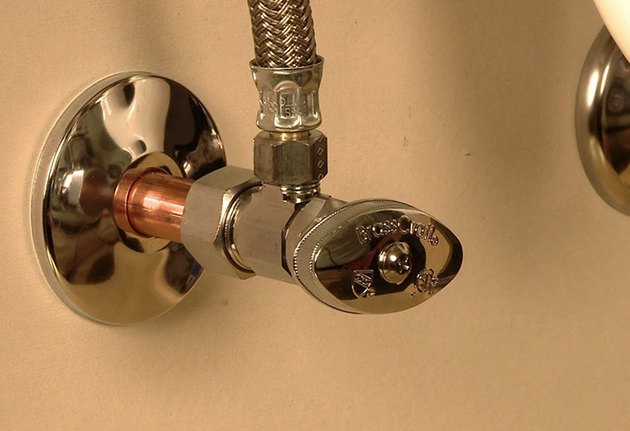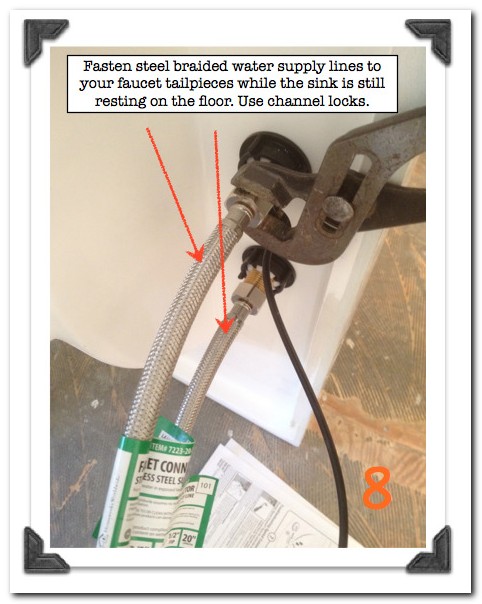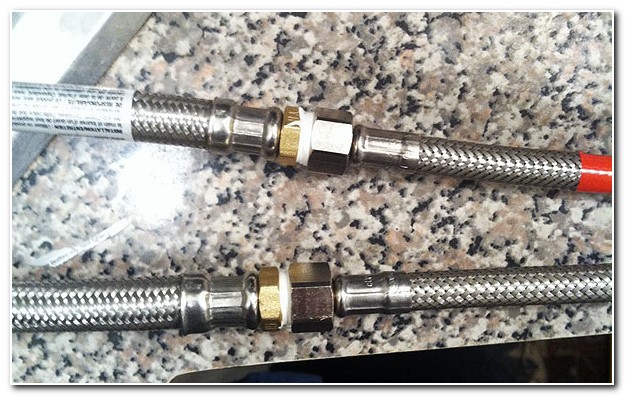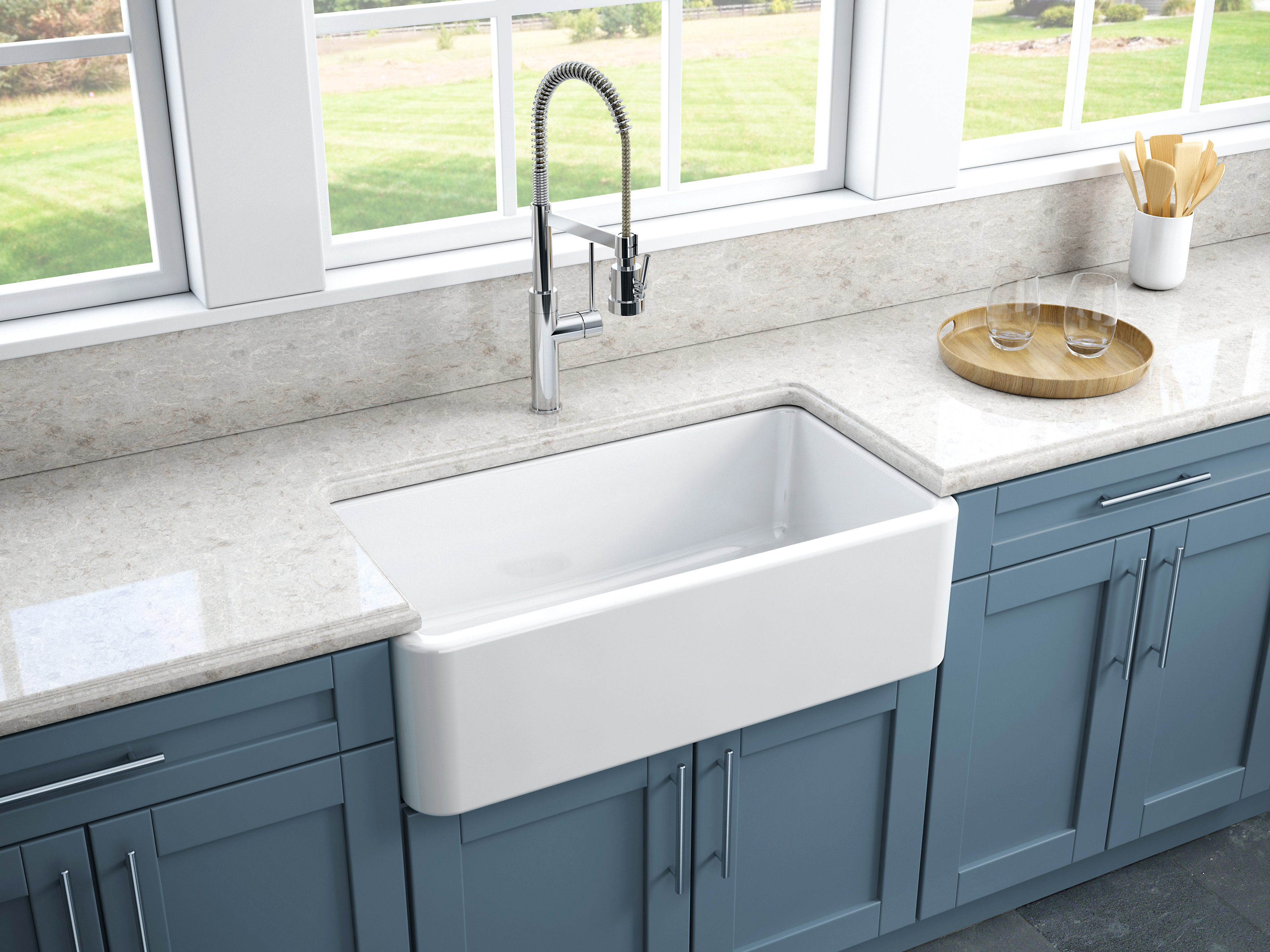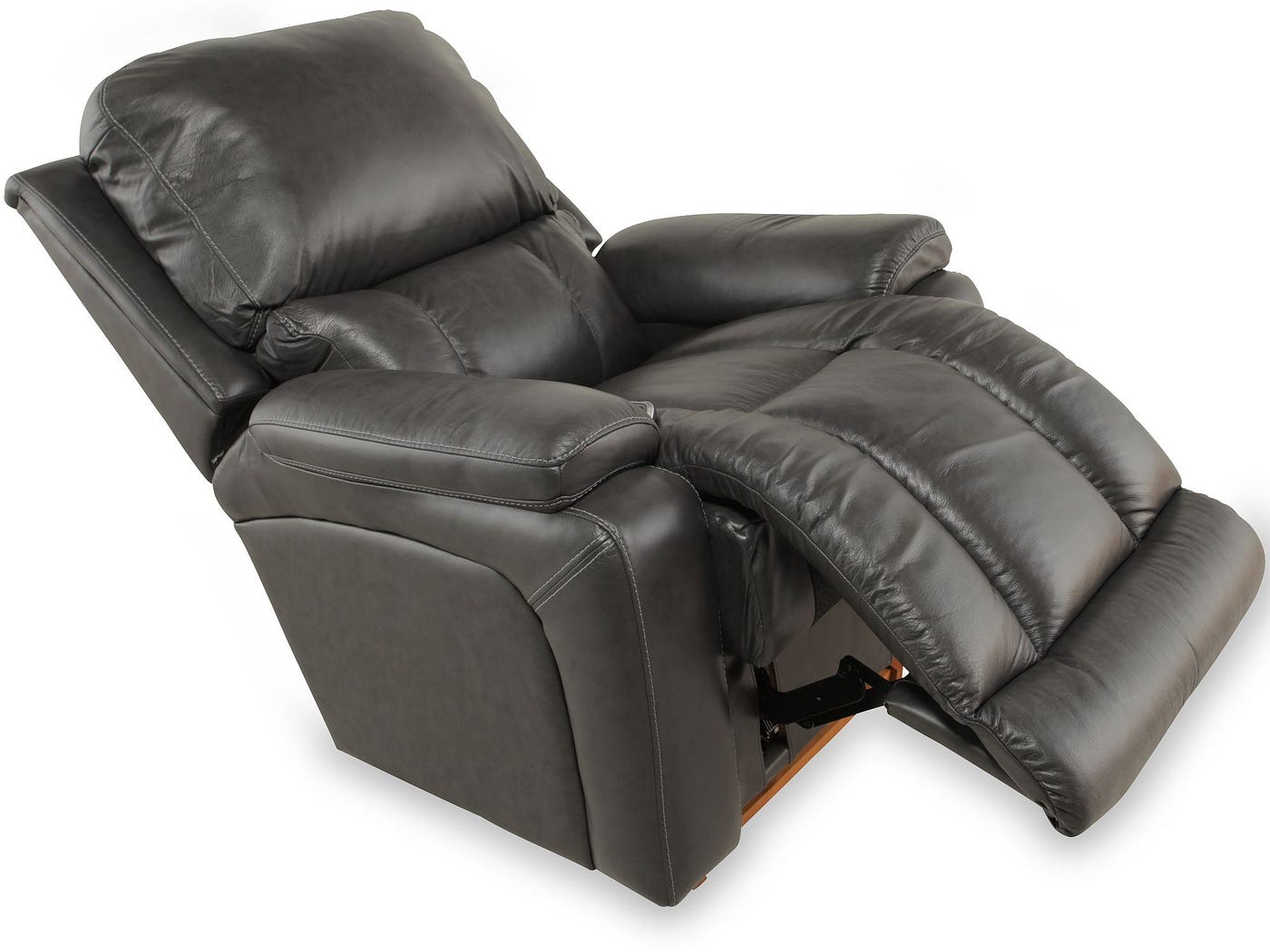Installing a bathroom sink water line may seem like a daunting task, but with the right tools and knowledge, it can be a simple and straightforward process. Whether you're building a new bathroom or need to replace an old water line, here are the steps to follow for a successful installation. Bathroom Sink Water Line Installation
The first step in installing a bathroom sink water line is to determine the location of the water supply valve. This valve controls the flow of water to the sink and is typically located under the sink or in a nearby wall. Once you have located the valve, turn it off to prevent any water from flowing while you work. Next, measure the distance between the water supply valve and the sink. This will determine the length of the water line you will need. It is always better to purchase a longer line to ensure you have enough rather than coming up short. Before installing the water line, make sure the sink and faucet are securely in place. Then, attach one end of the water line to the water supply valve and the other end to the faucet. Use a wrench to tighten the connections, being careful not to overtighten and risk damaging the fittings. How to Install a Bathroom Sink Water Line
If you notice any leaks or damage to your bathroom sink water line, it's important to address the issue right away. The longer you wait, the worse the problem can become and the more costly it will be to repair. In most cases, a simple repair can fix the issue and prevent any further damage. To repair a bathroom sink water line, start by turning off the water supply valve and draining any remaining water from the line. Then, inspect the line for any cracks, holes, or other damage. If you find any, use a pipe cutter to remove the damaged section and replace it with a new piece of water line. Make sure to use the correct size and type of fittings for a secure connection. Bathroom Sink Water Line Repair
Sometimes, a bathroom sink water line may be beyond repair and will need to be replaced entirely. This can happen due to old age, extensive damage, or a faulty installation. While it may seem like a daunting task, replacing a water line is a fairly simple process. To replace a bathroom sink water line, first, turn off the water supply valve and drain the line. Then, disconnect the old line from the sink and faucet, using a wrench if necessary. Next, measure and cut a new line to the appropriate length and attach it to the sink and faucet. Finally, turn the water supply back on and check for any leaks. Bathroom Sink Water Line Replacement
A common issue with bathroom sink water lines is a leak. A leak can be caused by a variety of factors, including loose fittings, damaged pipes, or high water pressure. If you notice a leak, it's important to address it as soon as possible to prevent any further damage. To fix a leak in a bathroom sink water line, first, turn off the water supply valve and drain the line. Then, inspect the fittings and pipes for any damage or loose connections. Tighten any loose fittings and replace any damaged parts. If the issue persists, you may need to call a professional plumber to determine the cause and fix the leak. Bathroom Sink Water Line Leak
The size of your bathroom sink water line will depend on the water flow rate and the distance between the water supply valve and the sink. Typically, the standard size for a bathroom sink water line is 1/2 inch. However, if you have a larger sink or a higher water flow rate, you may need a larger size, such as 3/4 inch. It's important to choose the correct size for your bathroom sink water line to ensure proper water flow and prevent any issues. If you're unsure, it's always best to consult a professional plumber for advice. Bathroom Sink Water Line Size
A clogged bathroom sink water line can cause a lot of frustration and inconvenience. It can also lead to other issues, such as slow draining and foul odors. If your sink is draining slowly or not at all, there may be a clog in the water line. To unclog a bathroom sink water line, first, try using a plunger or a drain snake to remove any debris or buildup. If that doesn't work, you may need to remove the water line and clean it out manually. If the clog is severe, it's best to call a professional plumber for assistance. Bathroom Sink Water Line Clogged
In cold climates, it's not uncommon for bathroom sink water lines to freeze during the winter months. This can happen when the temperature drops below freezing, causing the water inside the line to expand and potentially burst the pipe. To prevent your bathroom sink water line from freezing, make sure the area is properly insulated and keep the water running at a slow drip during extremely cold temperatures. If your water line does freeze, use a hairdryer or towels soaked in hot water to thaw it out. If the line has burst, you will need to replace it. Bathroom Sink Water Line Frozen
A shut-off valve is an essential component of a bathroom sink water line. It allows you to turn off the water supply to the sink in case of an emergency or for maintenance purposes. It's important to know where your shut-off valve is located and how to use it. The shut-off valve is typically located under the sink, near the water supply line. It can be turned off by twisting the handle clockwise. If you need to replace the shut-off valve, make sure to turn off the water supply first and use a wrench to remove the old valve and install the new one. Bathroom Sink Water Line Shut Off Valve
If you're remodeling or building a new bathroom and the existing water line is not in the desired location, you may need to extend the line. This can be a simple and cost-effective solution rather than rerouting the entire line. To extend a bathroom sink water line, you will need to purchase an extension piece and fittings that match the existing line. Make sure to turn off the water supply and drain the line before making any connections. Extend the line to the desired location and secure the fittings with a wrench. Turn the water supply back on and check for any leaks. Bathroom Sink Water Line Extension
Choosing the Right Water Line for Your Bathroom Sink

Key Considerations for Your Bathroom Design
 When it comes to designing your bathroom, every detail matters. From the color scheme to the fixtures, each element plays a role in creating the perfect space. One often overlooked but essential aspect of bathroom design is the
water line for your bathroom sink
. This small but crucial component is responsible for delivering clean water to your sink, and it is important to choose the right one to ensure functionality and longevity. Here are some key considerations to keep in mind when selecting a water line for your bathroom sink.
When it comes to designing your bathroom, every detail matters. From the color scheme to the fixtures, each element plays a role in creating the perfect space. One often overlooked but essential aspect of bathroom design is the
water line for your bathroom sink
. This small but crucial component is responsible for delivering clean water to your sink, and it is important to choose the right one to ensure functionality and longevity. Here are some key considerations to keep in mind when selecting a water line for your bathroom sink.
Material
 The material of your water line is an important factor to consider. There are various options available, including copper, PVC, and PEX.
Copper
is a popular choice due to its durability and resistance to corrosion. However, it is also the most expensive option.
PVC
is a more affordable alternative, but it may not be as durable as copper.
PEX
is a newer material that is gaining popularity due to its flexibility and ease of installation. Consider your budget and preferences when deciding on the material for your water line.
The material of your water line is an important factor to consider. There are various options available, including copper, PVC, and PEX.
Copper
is a popular choice due to its durability and resistance to corrosion. However, it is also the most expensive option.
PVC
is a more affordable alternative, but it may not be as durable as copper.
PEX
is a newer material that is gaining popularity due to its flexibility and ease of installation. Consider your budget and preferences when deciding on the material for your water line.
Size
Installation
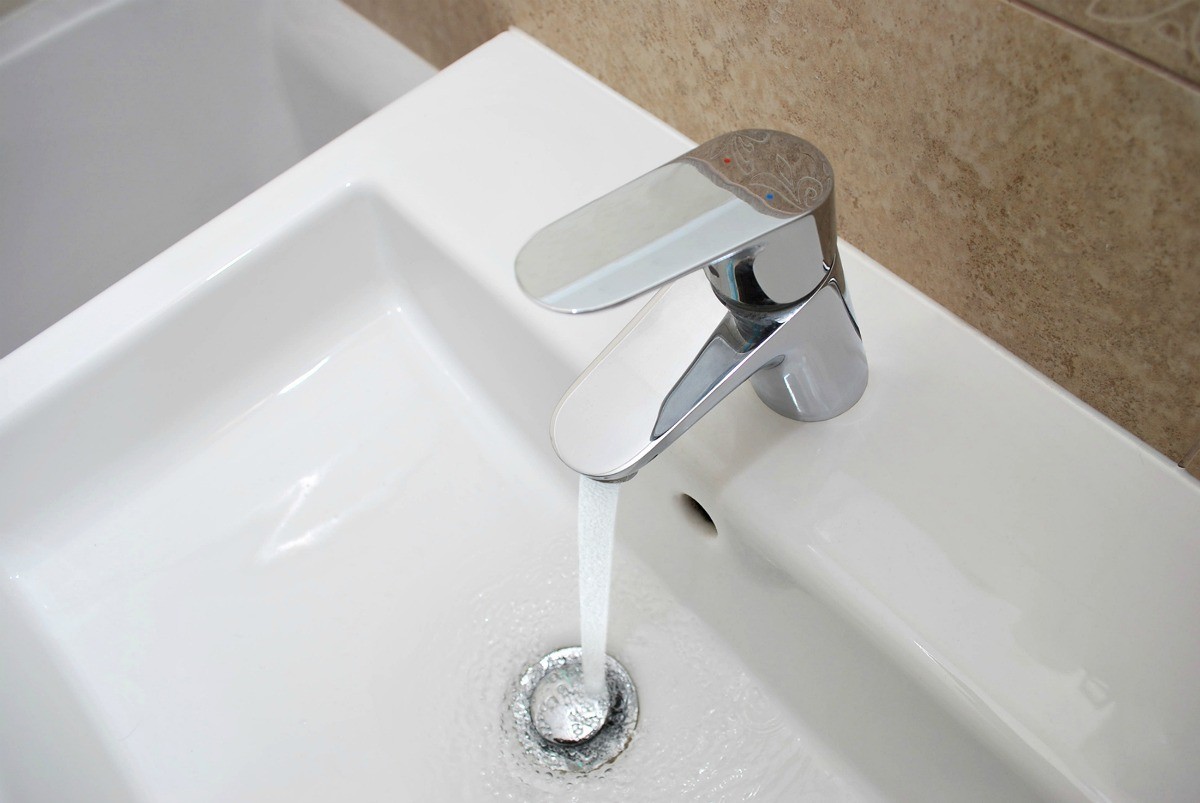 The installation process for your water line will also vary depending on the chosen material. Copper and PEX pipes require soldering or crimping, while PVC pipes can be glued together. It is important to hire a professional plumber to ensure proper installation, especially if you are not familiar with these techniques. Improper installation can lead to leaks and other issues down the line.
The installation process for your water line will also vary depending on the chosen material. Copper and PEX pipes require soldering or crimping, while PVC pipes can be glued together. It is important to hire a professional plumber to ensure proper installation, especially if you are not familiar with these techniques. Improper installation can lead to leaks and other issues down the line.
Quality
/close-up-of-overflowing-bathroom-sink-90201417-579787783df78ceb865822d8.jpg) Lastly, it is crucial to choose a high-quality water line for your bathroom sink. The quality of the material and installation will determine the longevity of your water line and its performance. Investing in a high-quality water line will save you from future plumbing issues and potentially costly repairs.
In conclusion, the
bathroom sink water line
may seem like a small detail in your bathroom design, but it plays a crucial role in the functionality and longevity of your sink. Consider the material, size, installation, and quality when choosing the right water line for your bathroom sink. With proper selection and installation, you can ensure a reliable and efficient water supply for your daily needs.
Lastly, it is crucial to choose a high-quality water line for your bathroom sink. The quality of the material and installation will determine the longevity of your water line and its performance. Investing in a high-quality water line will save you from future plumbing issues and potentially costly repairs.
In conclusion, the
bathroom sink water line
may seem like a small detail in your bathroom design, but it plays a crucial role in the functionality and longevity of your sink. Consider the material, size, installation, and quality when choosing the right water line for your bathroom sink. With proper selection and installation, you can ensure a reliable and efficient water supply for your daily needs.






/close-up-of-overflowing-bathroom-sink-90201417-579787783df78ceb865822d8.jpg)







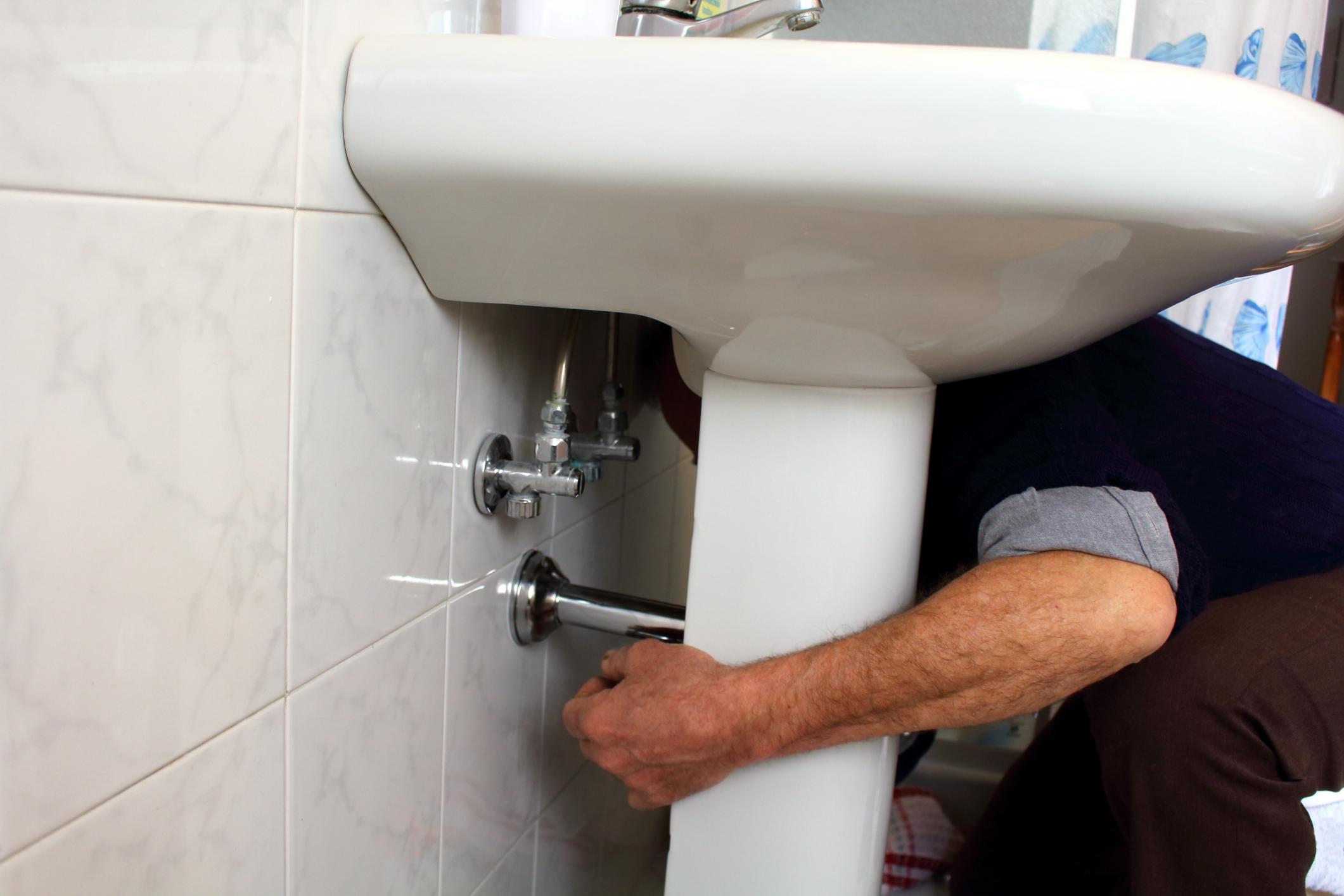
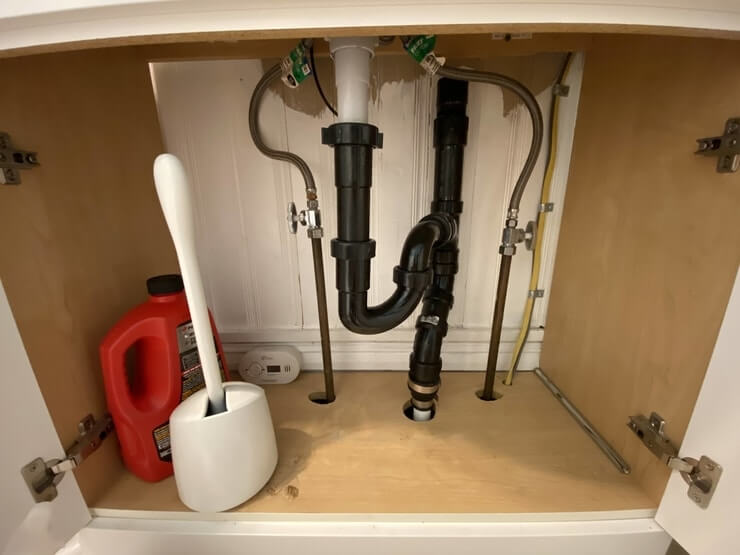








:max_bytes(150000):strip_icc()/close-up-of-overflowing-bathroom-sink-90201417-579787783df78ceb865822d8.jpg)



































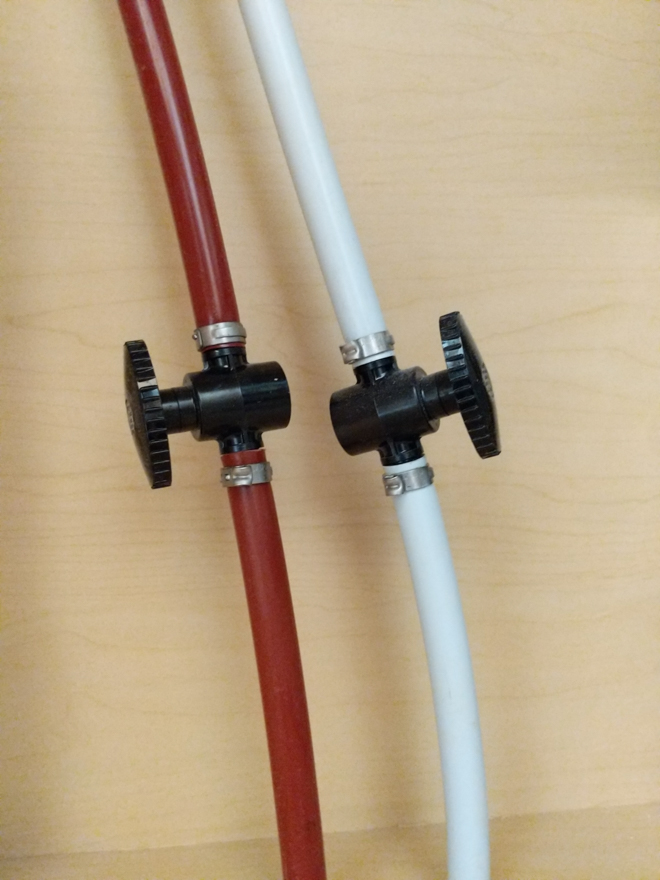


/cdn.vox-cdn.com/uploads/chorus_image/image/65889227/sink_shutoff_valves_x.0.jpg)



